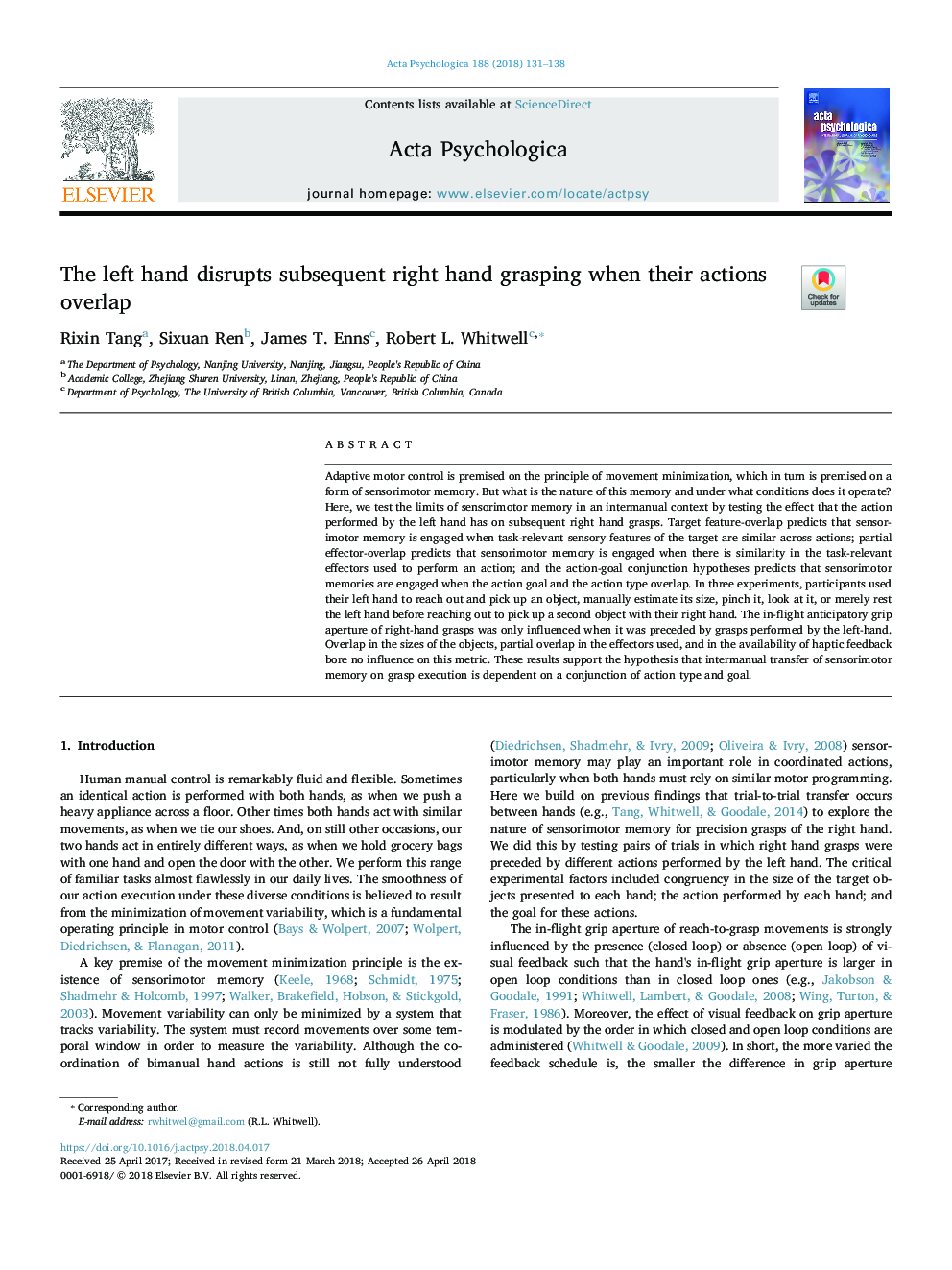| Article ID | Journal | Published Year | Pages | File Type |
|---|---|---|---|---|
| 7276608 | Acta Psychologica | 2018 | 8 Pages |
Abstract
Adaptive motor control is premised on the principle of movement minimization, which in turn is premised on a form of sensorimotor memory. But what is the nature of this memory and under what conditions does it operate? Here, we test the limits of sensorimotor memory in an intermanual context by testing the effect that the action performed by the left hand has on subsequent right hand grasps. Target feature-overlap predicts that sensorimotor memory is engaged when task-relevant sensory features of the target are similar across actions; partial effector-overlap predicts that sensorimotor memory is engaged when there is similarity in the task-relevant effectors used to perform an action; and the action-goal conjunction hypotheses predicts that sensorimotor memories are engaged when the action goal and the action type overlap. In three experiments, participants used their left hand to reach out and pick up an object, manually estimate its size, pinch it, look at it, or merely rest the left hand before reaching out to pick up a second object with their right hand. The in-flight anticipatory grip aperture of right-hand grasps was only influenced when it was preceded by grasps performed by the left-hand. Overlap in the sizes of the objects, partial overlap in the effectors used, and in the availability of haptic feedback bore no influence on this metric. These results support the hypothesis that intermanual transfer of sensorimotor memory on grasp execution is dependent on a conjunction of action type and goal.
Related Topics
Life Sciences
Neuroscience
Cognitive Neuroscience
Authors
Rixin Tang, Sixuan Ren, James T. Enns, Robert L. Whitwell,
